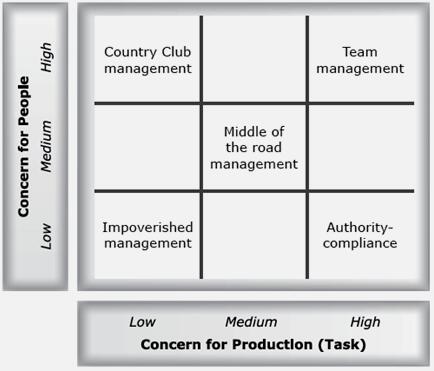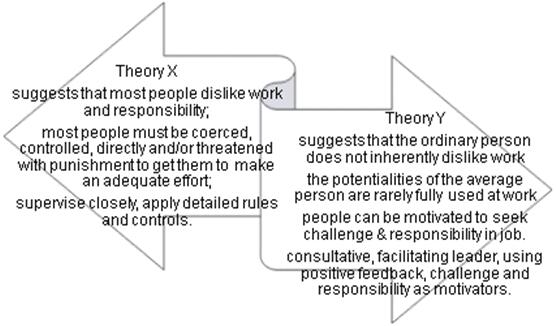扫码下载APP
及时接收考试资讯及
备考信息
b) Behavioural / Style Theories(行为理论)
Leaders can be made rather than born.
Successful leadership is based on definable, learnable behaviour.
Behavioural theories of leadership do not seek inborn traits or capabilities. Rather, they look at what leaders actually do.
Behavioural theories look at what leaders actually do and are often talking about the same thing: a continuum of behaviours from:
Wholly task-focused, directive leadership behaviours (representing high leader control) &
Wholly people-focused, supportive/relational leadership behaviours (representing high subordinate discretion).
行为理论与特质理论不同的是不会根据人的天生内在的特性来进行决定,而是根据领导者实际做了什么去决定。
1. The Managerial Grid(方格理论)
Leaders need to be concerned for both their people and the work needed to be done. The question is, how much attention do they pay to one or the other?
The following is a model defined by Blake and Mouton in the early 1960s.
* Authority-compliance: strong focus on task, but with little concern for people. Focus on efficiency, including the elimination of people wherever possible.

2. Continuum-Based Leadership - Ashridge Model(阿什里奇模型)
Unlike previous leadership theories, which have been presented as a polarised model, Tannenbaum and Schmidt came up with the concept of continuum.

The Ashridge Management College model suggests four distinct management styles:
| 1. Tells | Autocratic Dictator |
| 2. Sells | The Persuader |
| 3. Consults | Partial Involvement |
| 4. Joins | The Democrat |
3. Theory X & Theory Y(X和Y理论)
Douglas McGregor suggested that managers (in the USA) tended to behave as though they subscribed to one of two sets of assumptions about people at work: Theory X and Theory Y.

Copyright © 2000 - www.fawtography.com All Rights Reserved. 北京正保会计科技有限公司 版权所有
京B2-20200959 京ICP备20012371号-7 出版物经营许可证 ![]() 京公网安备 11010802044457号
京公网安备 11010802044457号